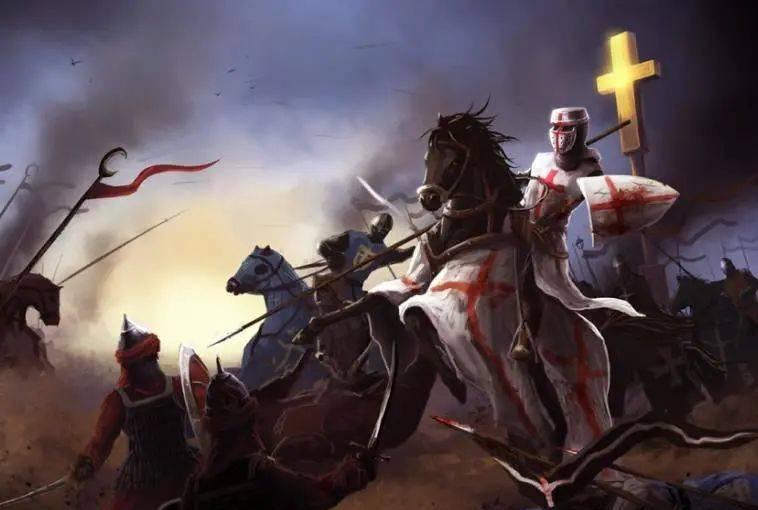What is history: it is the echo of the past to the future, the reflection of the future on the past. - Hugo
The Crusades were a war of aggression waged by the Holy See, the feudal lords of Western Europe and the Italian cities against the countries of the Near East, who, under the pretext of opposing infidels, waged a two-century-long war of aggression against the countries of the Eastern Mediterranean under the banner of jihad. The Holy See called the war a religious war, a war between Christianity against Muslims and the cross against the crescent moon. The crescent moon refers to the crescent moon and is a symbol of Islam. The cross is a symbol of Christianity. Everyone who participated in the expedition, including knights, peasants, and small craftsmen, wore a "ten" mark on their chests and arms, hence the name "Crusaders".

Knights were professional soldiers of western European countries in the Middle Ages, and were a low class among the feudal nobility, but in the Middle Ages, the feudal nobility was also generally called knights. Knights were very active during the period when wars of division between countries were prevalent. After the rise of the city, the commodity money economy developed rapidly, and they were very envious of the city goods and the luxury goods of the East, and the demand was increasing, but the money in their hands was becoming more and more insufficient. As a result of the primogeniture system, many knights with no hereditary titles, no property and no land appeared in Western Europe. They wander around, rob homes, kill people and goods, and do everything. Therefore, a large number of knights were eager to rush to the east to plunder property and seize land.
Merchants from western European cities, especially venice, Genoa, Pisa and other cities in Italy, attempted to seize the trading ports and markets of the eastern Mediterranean from the Arabs and Byzantines, monopolizing Mediterranean trade. Therefore, it actively supported the eastward expansion of the Crusaders. For the broad masses of peasants, the economic development of the cities increased their burden, for they had to pay large amounts of currency to their lords in order to redeem their freedom. Scuffles between feudal lords destroyed agricultural production and often enlisted peasants. In addition, there were 26 famine years in France in the 11th century, and there were seven consecutive years of famine in Western Europe from 1087 to 1095. The vast number of peasants, who saw no hope from the real world, could easily believe the Church's call for jihad, believing that taking risks in the East would make a fortune and improve their situation.
The situation in the Near East was very favorable to the Crusaders' invasion of the East. According to Christian legend, Palestine was the place where Jesus was born and ascended to heaven, and his tomb is in Jerusalem, which is considered a holy place. Jerusalem was the political and religious center of the Jews in ancient times, the capital of the Hebrew kingdom, and naturally considered a holy place by Jews.
According to Islam, the Allah emissary Muhammad ascended to heaven on a horse in Jerusalem on July 17, 622, and that day was designated by the Islamic calendar as the Feast of The Ascension, and Jerusalem became a holy city for Muslims. Although the Near East was incorporated into the Arab Empire in the 7th century, the Arabs were more tolerant of infidels, and pilgrims from Byzantium and Western Europe were still free to enter the Holy Land.
In the mid-11th century, the rise of the Islamic Seljuk Turks and their western conquests complicated the situation in the Near East. They controlled almost all of Asia Minor, but instead of forming a unified state, they were divided into separate governorates such as Roma, Mosul, Damascus, Aleppo, Antioch, Tripoli, etc.
In the 1690s, infighting broke out among the Seljuk Turks, and some Islamic mosques were destroyed, but pilgrims from the sea could still go to Jerusalem after paying a small amount of tax. However, the Pope and the Holy See fabricated news that Muslims insulted Western pilgrims and incited religious antagonism. At the same time, the vast Byzantine Empire was in decline, shrinking into a small area in the southeastern corner of Europe.
In 1091, a turkic force prepared to attack the Byzantine capital of Constantinople, and the empire was in danger. The desperate Emperor Alexei I (1081-1118) had to appeal to the Pope and the Holy Roman Emperor for help. The plight of the Byzantine Empire finally became an excuse for the feudal lords of Western Europe to wage wars of aggression.
The Holy See was the culprit of the Crusades.
In 1095, Pope Urban II (1088-1099) called for the formation of a crusade at the Congregation of Clement in France. At the end of the meeting, he delivered an impassioned and inflammatory speech to the people. He chronicled the suffering of Christians in the East and the "atrocities" of the Turks, calling on greedy lords, belligerent knights, adventurous merchants, and blind peasants to take up arms and go to the East to reclaim the Lord's grave from the pagans. He promised that anyone who took part in the expedition would be forgiven of their sins and ascended directly to heaven after death. The crowd of attendees was so excited that Urban's speech was occasionally greeted by the words "Amen! "Amen!" (Hebrew, meaning only wish) was interrupted by a cry. The impulse of religious feelings, the temptation of material interests, caused many strata of people in Western Europe, despite their different aims, to devote themselves fanatically to this war of conquest, which shocked the world.